Trip Overview
Embark on a classic and picturesque journey to Everest Base Camp that begins in the quaint town of Jiri. The Jiri to Everest Base Camp Trek, often known as the “Pioneer’s Route,” offers a unique and authentic experience as you traverse through charming villages, lush landscapes, and ancient trails. Join us on this unforgettable adventure that retraces the historic steps of early Everest expeditions.
Start in Jiri: The Gateway to Adventure:
Commence your trek in Jiri, a town with historical significance as the starting point for early Everest expeditions. The trail meanders through terraced fields, rhododendron forests, and traditional Sherpa villages, providing a glimpse into the cultural richness of the region.
Classic Trekking Experience:
Follow the footsteps of legendary mountaineers and adventurers who once used this route to reach Everest Base Camp. Trek through charming settlements like Bhandar, Sete, and Nunthala, interacting with locals and experiencing the warmth of Sherpa hospitality.
Namche Bazaar: The Cultural Hub:
As you ascend, reach Namche Bazaar, a bustling market town and the gateway to the Khumbu region. Here, soak in the vibrant atmosphere, explore the local market, and enjoy stunning views of Everest and surrounding peaks.
Everest Base Camp: The Ultimate Ascent:
The trail continues through Tengboche, Dingboche, and Gorak Shep before reaching the iconic Everest Base Camp. Stand in awe at the foot of the world’s highest peak, surrounded by the dramatic landscapes that have inspired adventurers for decades.
Why Choose Jiri to Everest Base Camp Trek:
- Historical Significance: Follow the historic trail taken by early Everest pioneers, creating a sense of connection to the mountain’s exploration legacy.
- Off-the-Beaten-Path Charm: Experience the authenticity of rural Nepali life and encounter fewer trekkers on the trail compared to the more popular Lukla route.
- Cultural Enrichment: Interact with locals in traditional Sherpa villages, visit ancient monasteries, and gain a deeper understanding of the cultural tapestry of the Khumbu region.
Prepare for the Trail Less Traveled:
Our comprehensive guide ensures you are well-prepared for the Jiri to Everest Base Camp Trek. From acclimatization strategies to trekking essentials, we equip you with the knowledge needed to make this historical journey safe and unforgettable.
Embark on the Jiri to Everest Base Camp Trek, where the spirit of adventure intertwines with the history of exploration. Join us as we guide you through this scenic odyssey, where every step is a tribute to the pioneers of Everest, and every vista is a testament to the timeless beauty of the Himalayas.
Tour Highlight
- Expereice of landing and taking off in Lukla airport
- Picturesque view of Mountains and Himalayan Valleys
- Climb up Kalapathar (5,555m).
- Raw beauty of Jiri
- Amazing view from Gokyo Ri
- Experiecing the real path of Tenzing Norge and Edmund Hilary
Trip Facts
Itinerary Informations
Please contact us for itinerary!
What Includes & Excludes
Includes
Accommodation
- Four Nights hotel accommodation in Kathmandu
Flight
- Lukla to Ramechhap flight
Guides and Porters
- Trekking Porters – We Assign a porter for each two trekkers.
- An English speaking local guide
Meals
- Three meals (Breakfast, Lunch, and Dinner) during the trek.
Transports
- All ground transportation as per itinerary
Excludes
- Anything not mentioned in the price includes.
- Personal trekking gears/equipment.
- Tips for trekking staff (Tipping is expected).
- Lunch and dinner in the city.
- All drinks including bottled/boiled water along the trekking route
- Visa fees and travel insurance.
- International airfare to and from Nepal.
Join the Departure
Join the departures 
Guest Reviews
We highly recommend Broad Adventures they provided exceptional guidance on our Everest Base Camp trek. Our guide’s Gynau’s professionalism,...
Read More...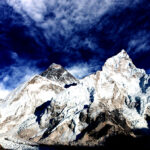
David Neufeld
CanadaIf you are looking for a tour to see the Mt Everest base camp look no further. I have...
Read More...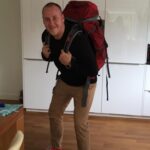
Tim Troost
AustraliaI was looking at an exotic trek adventure. After looking for a bunch of places to go I thought...
Read More...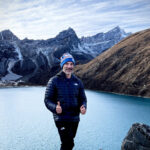
Keith B.
USAKeshab was our most gracious and amiable guide in Kathmandu and to Everest basecamp. My wife accompanied me on...
Read More...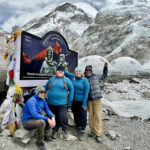
Ken Byers , Nevada
USAMy son and I went for trekking in Nepal in 2009, and we were lucky to have Keshab Khanal...
Read More...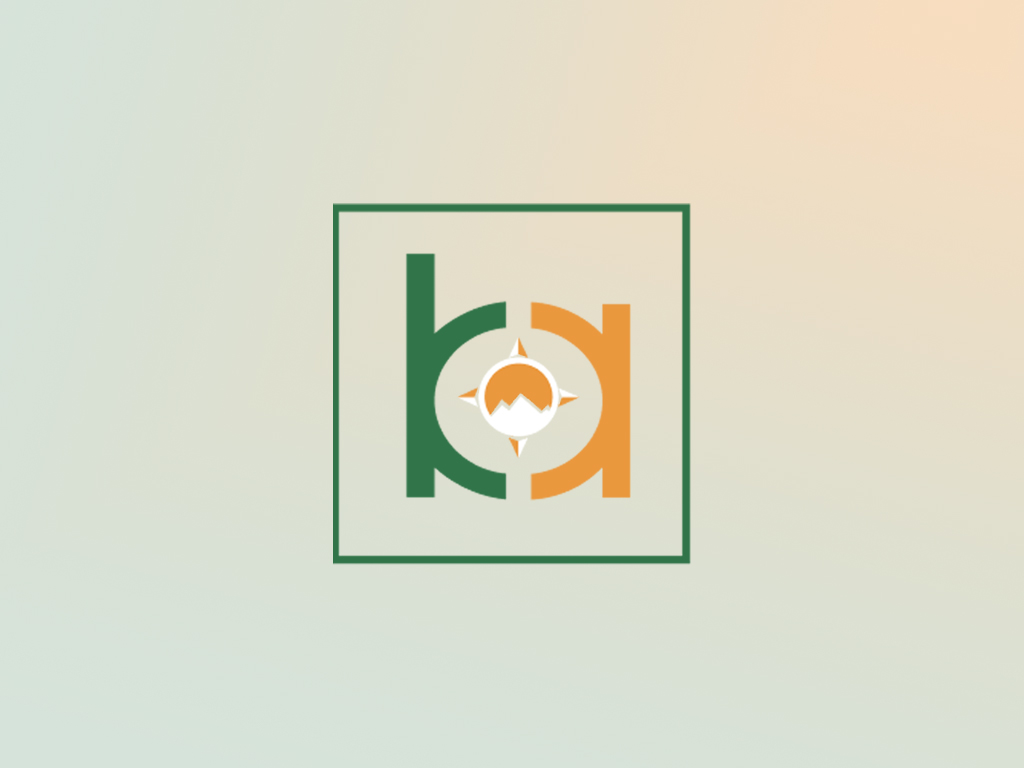
Dr. Raphael Hemmendinger
Jerusalem , IsraelIn 2005 I came to Nepal for the second time, this time whith a very specific queste. I wanted...
Read More...
Richard Rijken
Amsterdam , NetherlandsI was always willing to go to the Himalayas and explore some of the beauties hidden in the sacred...
Read More...
John Peter
Manchester , United KingdomNamaste! This was my first time to Nepal, and I had an amazing time on my trek. From the...
Read More...
David Patrician
Hamburg , GermanyI was on trekking from 24.10.10 to 5.11.10 in the half part of Annapurna circuit from Bhulbhule to Jomsom....
Read More...
Vaya Bairaba
Athens , GreeceImportant Info
Jiri to Everest Base Camp: Guide
Embarking on the Jiri to Everest Base Camp trek is an exciting and adventurous journey. To make the most of your experience, it’s essential to have some key information at your fingertips. In this comprehensive guide, we provide valuable insights to help you plan and prepare for the trek.
How High is Everest Base Camp?
Everest Base Camp is situated at an elevation of 5,364 meters (17,598 feet) and serves as the launchpad for climbing the world’s highest peak, Mount Everest. However, the highest point reached on the Everest Base Camp trek is Kalapatthar, located at an altitude of 5,555 meters (18,225 feet). From this vantage point, you can enjoy unobstructed views of Mount Everest and the surrounding peaks, providing a breathtaking perspective of the Himalayas and the Khumbu region.
Accommodation During Jiri to Everest Base Camp Trek
Everest Base Camp Trek Accommodation:
- Kathmandu: 2 nights at a 3-star hotel in Thamel, such as Hotel Moonlight or Similar
- Trekking Area: 11 nights at local teahouses/guesthouses with twin-sharing rooms and basic amenities.
Luxury Everest Base Camp Trek Package:
- Upgraded accommodations and enhanced facilities in Kathmandu and throughout the trekking journey.
Kathmandu Accommodation:
- Comfortable 3-star hotels with private bathrooms, TV, and ample storage. Options to upgrade to single occupancy or 4- or 5-star hotels are available.
Teahouses/Guesthouses:
- Basic lodging with improved facilities in areas like Lukla, Phakding, and Namche, offering rooms with attached toilets/bathrooms.
Permits for Jiri to Everest Base Camp Trek
To trek to Everest Base Camp, you need three types of permits:
- Trekking Information Management System (TIMS) Permit:
- SAARC Nationals: NPR 600 per person
- Foreign Nationals: NPR 2,000 per person
- Sagarmatha National Park Permit:
- SAARC Nationals: NPR 1,500 per person
- Foreign Nationals: NPR 3,000 per person
- Khumbu Pasang Lhamu Rural Municipality Entrance Card:
- NPR 2,000 per person for both SAARC and foreign nationals
These permits are covered in most trekking packages.
Safety and Preparation for Jiri to Everest Base Camp Trek
General Safety:
- The trek is generally safe for individuals in good health.
- High altitude presents a significant challenge, and altitude sickness can affect anyone.
- Mental preparedness is as important as physical fitness.
Guide and Porter Support:
- Certified guides equipped with oximeters and first aid training.
- One guide for small groups (up to 8 people) and an associate guide for larger groups.
- One porter for every two clients, with weight limits of 15 kg per client.
Altitude Sickness Prevention:
- Consult a medical expert before the trek.
- Avoid alcohol, tobacco, and limit caffeine intake.
- Adhere to safe altitude gain rules, maintain hydration, and eat a carb-rich diet.
- Gradual acclimatization and hiring experienced guides are recommended.
- Recognize symptoms like nausea and dizziness and descend promptly if necessary.
- Carry altitude sickness medications and a first aid kit.
Best Time for Jiri to Everest Base Camp Trek
Spring (March-June):
- Mild temperatures (around 20°C/68°F)
- Blooming flowers and clear skies.
Monsoon (July-mid-September):
- Heavy rains at lower elevations.
- Quieter trails with temperatures averaging 22°C (71.6°F).
Autumn (end of September-November):
- Pleasant weather and clear views.
- Colorful landscapes.
Winter (December-February):
- Cold temperatures (dropping to -20°C/-4°F at higher altitudes).
- Solitude and snowy trails.
Spring and autumn are the most popular times due to their pleasant conditions.
Flying into Lukla
Lukla Airport (Tenzing Hillary Airport):
- One of the world’s most dangerous airports, located at 2,840 meters.
- Entry and exit point for Everest region treks via flight.
Flight from Ramechhap/Manthali Airport:
- 5 to 6-hour drive from Kathmandu, followed by a 20-minute flight to Lukla.
- Operational during peak months (March-May, October-November).
Flight from Kathmandu Airport:
- 35-minute flight to Lukla.
- Operational during off-peak months (January-February, June-September, December).
Baggage Allowances:
- Maximum weight: 15 kg (33 pounds) including duffel bag and daypack.
- Extra fee for excess weight (USD 2-5 per kilogram).
Travel Insurance for Jiri to Everest Base Camp Trek
Mandatory Coverage:
- High-altitude adventure activities (above 5,000 meters).
- Flight disruptions, accidents, and emergency evacuations.
Recommended Providers:
- USA/Canada: Tugo, United Health Care, World Nomad, Blue Cross
- Australia/New Zealand: Fast Cover, Allianz Australia
- Singapore: Ergo, World Nomad (Explore plan level 3)
- Europe: Europe Assistance, Austrian Alpine Club, Allianz Europe
- India: ICICI Lombard
Ensure the policy covers trekking up to 6,000 meters.
Additional Tips for a Successful Trek
Tipping:
- Customary for guides, porters, and local staff.
- Suggested amount: 15% of the total trek cost, divided between guides and porters.
Charging Devices:
- Renewable energy like solar power is used.
- Fee for charging devices (USD 1-5 per charge).
- Bring two-pin and three-pin adapters.
Food Options:
- Teahouses follow international food preparation guidelines.
- Main food: ‘Dal Bhat’ (rice and lentils).
- Other options: American breakfast, fried rice, noodles, soups.
Beginner’s Guide:
- Physical training and conditioning are crucial.
- Engage in cardiovascular exercises, strength training, and hiking.
- Adequate rest and a positive mental attitude are essential.
Training Program:
- Start training two months in advance.
- Weekly uphill hikes, gym workouts, and diverse cardio activities.
- Balanced nutrition and hydration are important.
- Mental preparation involves understanding challenges and setting realistic expectations.
Trekking Difficulty:
- Altitude sickness and trek length are the main challenges.
- Training your body for high altitudes is essential.
- Plan to walk an hour, 4-5 times weekly, starting 2 months prior to trekking.
Cost of Jiri to Everest Base Camp Trek:
- Varies based on preferences and trek duration.
- Standard itinerary cost: USD 1,450 per person for a 14-day trek.
- Prices vary depending on group size and services provided.
Internet & Wi-Fi Facility in Jiri to Everest Base Camp Trek
- Internet packages available through Air Link and Everest Link.
- Unlimited internet: NPR 700 (6-7 USD) for 24 hours, NPR 1200 (9-10 USD) for 48 hours.
- Purchase Everest Link or a 3G/4G SIM card for consistent connectivity.
- FOR MORE DETAIL YOU CAN READ Connectivity on the Jiri to Everest Base Camp Trek: Wi-Fi, Cellular, and More.
Extra Expenses:
- Budget around USD 100-150 for snacks and beverages.
- Costs vary based on individual preferences and activities.
Trekking Distance:
- Jiri to Everest Base Camp Trek: approximately 185 kilometers (115 miles).
- Total distance: around 370 kilometers (230 miles), typically completed in 21 days.
The Jiri to Everest Base Camp trek offers a unique blend of adventure, stunning landscapes, and cultural experiences. Proper preparation, including physical training, mental readiness, and having the right gear and permits, will ensure a successful and enjoyable journey. Whether you are a beginner or an experienced trekker, the majestic beauty of the Everest region awaits you.
Get Trip PDF file
Why travel with
Broad Adventures
Since 2010, we have curated unique itineraries that offer once-in-a-lifetime experiences, ensuring every trip is filled with joy and adventure. Our focus on the fun factor and the right amount of challenge allows you to achieve a profound sense of personal accomplishment, all while enjoying the camaraderie of like-minded travelers.
Small-Group Adventures
Join an intimate group of like-minded travelers who share your passion for discovering the world's wonders safely and confidently. Our small group settings foster a deeper connection with your fellow explorers and the incredible destinations we visit.
Expert Local Guides
We exclusively employ local guides and porters for their unparalleled knowledge and expertise. Their insights and firsthand experiences enrich your journey, giving you a deeper understanding and appreciation of the local culture, history, and environment.
Responsible for Tourism
Your safety is our utmost priority. Our dedicated team of trained professionals ensures the highest standards of care, including providing fresh and hygienic meals, comprehensive First Aid supplies, and round-the-clock communication services. We are committed to responsible tourism practices, emphasizing the importance of sustainable and ethical travel.
Health and Saftey
Promoting responsible tourism is essential, as it calls for a collective effort from everyone involved in the industry. By prioritizing health and safety, we ensure that each journey is not only enjoyable but also respectful of the destinations and communities we visit.
How can we help you?
- City Tour Equipment
- City Tour Season
- Climbing Equipment
- Climbing Season
- General Questions
- Guide and Staffs
- Nepal Overview
- Tipping
- Transportations
- Trekking Equipment
- Trekking Season
- VISA info
- Weather and Temperature
Do you provide any equipment for the trek?
Broad Adventure provides you a basic equipment like a Sleeping Bag and a down Jacket, for the tea-house trek. And for the climbing trip, we provide the basic equipment. For a camping trek check it once including the section.
What is the time zone of Nepal?
NPT (UTC+05:45)
What cultural attractions can I explore in Kathmandu?
Kathmandu is home to historical sites like Durbar Square, Swayambhunath (Monkey Temple), and Pashupatinath Temple. These landmarks showcase Nepal’s rich cultural and religious heritage, providing visitors with a deep insight into the country’s history.
What are the must-visit cities in Nepal?
Kathmandu, Pokhara, Bhaktapur, and Patan are popular cities offering rich cultural experiences. Each city has its own unique charm, historical sites, and vibrant local markets.
Do you provide any equipment for the trek?
Broad Adventure provides you a basic equipment like a Sleeping Bag and a down Jacket, for the tea-house trek. And for the climbing trip, we provide the basic equipment. For a camping trek check it once including the section.
Do I need to tip the guide and porters? What is the standard tip?
Tips is expected by your team members and normally the standard is 10% of your total trip cost.
What is the climbing season in Nepal?
The main climbing seasons are spring (April to May) and autumn (September to November). During these times, the weather is more stable, providing safer and more favorable conditions for climbing expeditions.
Are there other mountains in Nepal suitable for climbing?
Yes, Nepal is home to numerous trekking peaks and mountains suitable for climbing, such as Island Peak, Mera Peak, and Lobuche East. These peaks offer a challenging yet rewarding experience for climbers of various skill levels.
Can I climb Mount Everest as a tourist?
Climbing Mount Everest requires significant preparation, experience, and permits. Most climbers join organized expeditions with experienced guides. Climbing Everest is a serious undertaking that demands physical fitness, technical skills, and a high level of commitment.
Do I need to tip the guide and porters? What is the standard tip?
Tips is expected by your team members and normally the standard is 10% of your total trip cost.
What is the voltage and plug type used in Nepal?
The standard voltage is 230V, and the plug type is the Europlug (Type C) and the British-style plug (Type D). It’s advisable to bring adapters if necessary.
What is the voltage and plug type used in Nepal?
The standard voltage is 230V, and the plug type is the Europlug (Type C) and the British-style plug (Type D). It’s advisable to bring adapters if necessary.
Is it necessary to get travel insurance for Nepal?
Yes, travel insurance is highly recommended, especially for trekking and adventure activities. Ensure that your insurance covers medical emergencies, evacuation, and trip cancellations.
What languages are spoken in Nepal?
The official language is Nepali, but English is widely understood in tourist areas. Additionally, various ethnic groups have their own languages.
What is the currency used in Nepal, and are credit cards widely accepted?
The official currency is the Nepalese Rupee (NPR). While major cities and tourist areas accept credit cards, it’s advisable to carry cash in remote areas. ATMs are available in urban centers.
How can I get around within cities in Nepal?
Transportation options include taxis, rickshaws, and local buses. Walking is also a great way to explore the cities, especially in the old quarters. Many cities have well-preserved historic areas, and navigating them on foot allows for a more immersive experience.
What cultural attractions can I explore in Kathmandu?
Kathmandu is home to historical sites like Durbar Square, Swayambhunath (Monkey Temple), and Pashupatinath Temple. These landmarks showcase Nepal’s rich cultural and religious heritage, providing visitors with a deep insight into the country’s history.
Can I climb Mount Everest as a tourist?
Climbing Mount Everest requires significant preparation, experience, and permits. Most climbers join organized expeditions with experienced guides. Climbing Everest is a serious undertaking that demands physical fitness, technical skills, and a high level of commitment.
Are permits required for trekking in Nepal?
Yes, trekking permits are required for most trekking regions. The type of permit depends on the specific trekking area. It’s important to obtain the necessary permits from the respective authorities to support local conservation and management efforts.
When is the best season for treks in Nepal?
From March to mid-June and September to December is the best season for treks.
What is the fitness required for the treks?
Generally, to trek in Nepal we should have good physical and health conditions. And also able to walk 4- 7 hours in day at a high altitude with your little backpack.
Do you pick me up at the Airport upon my arrival?
Yes, our airport representative welcomes you at the airport and transfers you to the hotel in a private tourist vehicle.
Does my guide/porter speak English?
They speak English. All the guides are professional and due to their professionalism, they speak good English. The guide’s English is enough to explain the local culture, activities, and religions.
Are the treks and tours secured? What about the security?
Providing security to our clients is our principal. The government-licensed holder guides and other crew members are carefully assigned for your trip. Even though, would like to counsel you to take care of your equipment, and bags. If you doing a tea-house trek your accommodation is in a local guesthouse, where you have to be a precaution yourself at all times. And if you are on a camping trek always keep your bags inside the tent and while at nighttime please keep your bag in the middle of the tent. The camping leader assigns a Sherpa as a guard throughout the nighttime.
What sort of ground transportation do you use?
Normally we assign a car for up to 2 people and a Jeep for up to 5 people and then a bus for up to 14 PAX and Coster and Sutlej Bus depending on group size. There are some trekking routes, which are dirt roads for them we assign 4WD Jeeps. It also depends on what services you opt for.
Are the staff insured by your company?
Yes, all of the staff and crew members are insured.
Should I need to join the group?
Joining a group depends on your booking and the option that you choose. If you have booked for Private Trip then obviously you will not join. Otherwise, normally the same trip departs on the same day then the group will join.
Do you arrange a private trip?
Yes, of course, we will arrange a private tour.
How big is a group size?
We will try to arrange a small group of willing people, which immortalize the treks. Normally we encompass 12 -16 people in a group. (This is not to apply to those who want to do a Private Trip, no minimum and maximum for them.)
Is the drinking water okay? Or do I need to use tablets?
For drinking water you can buy bottled water and purified mineral water on tea-house treks and city tours. And in the camping trek, the camping cook provides you with boiled water. For some cases of remote area trekking it would be better to have some purification tablets that you can buy in Kathmandu.
What are the accommodations and meals like?
All the meals that you provided are hygienic and fresh. While you are on a camping trek you get meals prepared by a professional camping cook. And if you are doing a tea-house trek you will get the main course as like in the cities. For accommodation on the camping trek, you will have a tent with good-quality mattresses and a sleeping bag. And if you are on a tea-house trek you will normal twin-sharing room with basic facilities with a warm mattress and blanket, and also we provide a sleeping bag if you need it.
Is the shower facility during the tour/trek?
Yes, you can have a shower during the trek. In the camping trek, you will get a shower in a shower tent which is provided 3-4 times in the whole trek, depending on the duration of the trek. And in a tea-house trek, we will provide you attached room where possible and for the rest of town, you will pay for a shower.
Do you provide any equipment for the trek?
Broad Adventure provides you a basic equipment like a Sleeping Bag and a down Jacket, for the tea-house trek. And for the climbing trip, we provide the basic equipment. For a camping trek check it once including the section.
Is there any possibility of communicating in my hometown?
Yes, you can. In the Everest and Annapurna regions, you can connect via Phone, or Internet both available in most of the town and, in some remote routes, you may need to use a satellite phone that is carried by your trek guide or also get in the local town.
Can I charge the batteries of cameras, and phones?
Yes, you can charge your devices, but recommended you bring your plugs, and chargers and also do not leave unattended anything while charging in a lobby or somewhere in the trekking guesthouse. And if you are on a camping trek it’s quite hard to charge the phone so we advise you to bring a portable charge.
Are there any health precautions I should take before traveling to Nepal?
Vaccinations for diseases like typhoid, hepatitis, and tetanus are advisable. Altitude sickness prevention measures should be considered for high-altitude treks.
How can I find a reliable trekking guide in Nepal?
Reliable guides can be found through licensed trekking agencies, recommendations from fellow travelers, or by checking with the Nepal Tourism Board. Ensure that your guide has the necessary permits and is experienced in the chosen trekking region
Is hiring a local guide recommended for exploring Nepal?
Yes, hiring a local guide is highly recommended, especially for trekking and exploring remote areas. Guides provide valuable insights into the culture, history, and geography of the region, ensuring a safer and more enriching experience.
Is hiring a local guide recommended for exploring Nepal?
Yes, hiring a local guide is highly recommended, especially for trekking and exploring remote areas. Guides provide valuable insights into the culture, history, and geography of the region, ensuring a safer and more enriching experience.
Is Nepal a safe country for tourists?
Yes, Nepal is considered safe for tourists. However, like any travel destination, it’s essential to follow common-sense safety practices and stay updated on travel advisories. Local people are welcoming, and the country values its reputation as a safe and friendly destination.
What is the best time to visit Nepal?
The best time to visit Nepal is during the spring (March to May) and autumn (September to November) seasons when the weather is generally favorable for outdoor activities. During these periods, the skies are clear, and the temperatures are moderate.
What makes Nepal a popular tourist destination?
Nepal is renowned for its stunning Himalayan landscapes, rich cultural heritage, diverse wildlife, and warm hospitality. The country offers a unique blend of adventure, spirituality, and natural beauty.
What is the standard tip?
Tipping is subjective so it depends on your satisfaction. However, the standard is about 20% of the trip cost you can share with the staff.
Do I need to tip the guide and porters? What is the standard tip?
Tips is expected by your team members and normally the standard is 10% of your total trip cost.
Do you provide any equipment for the trek?
Broad Adventure provides you a basic equipment like a Sleeping Bag and a down Jacket, for the tea-house trek. And for the climbing trip, we provide the basic equipment. For a camping trek check it once including the section.
Are permits required for trekking in Nepal?
Yes, trekking permits are required for most trekking regions. The type of permit depends on the specific trekking area. It’s important to obtain the necessary permits from the respective authorities to support local conservation and management efforts.
Do I need a guide for trekking in Nepal?
While it’s not mandatory, hiring a local guide is highly recommended for safety, navigation, and cultural insights. Guides are familiar with the terrain, can provide valuable information about the region, and ensure a smoother trekking experience.
What are the most popular trekking destinations in Nepal?
The Everest Base Camp trek, Annapurna Circuit, Langtang Valley trek, and Manaslu Circuit are among the most popular trekking routes in Nepal. Each trek offers unique experiences, from breathtaking mountain views to encounters with diverse cultures.
When is the best season for treks in Nepal?
From March to mid-June and September to December is the best season for treks.
Do I need to tip the guide and porters? What is the standard tip?
Tips is expected by your team members and normally the standard is 10% of your total trip cost.
Can I extend my tourist visa to Nepal?
Yes, tourist visas can be extended at the Department of Immigration in Kathmandu or the Immigration Office in Pokhara. Extension fees and requirements vary, and it’s advisable to initiate the process a few days before the current visa expires.
What documents are required for a tourist visa on arrival?
Passport with at least six months validity, a completed visa application form (available at the airport), and two passport-sized photos are required. Additionally, visa fees must be paid in cash (USD or equivalent).
What are the types of visas available for tourists?
Tourist visas are available for duration ranging from 15 to 90 days. Extensions can be obtained within Nepal if needed. Other visa categories include business visas, student visas, and diplomatic visas, each with specific requirements.
How do I obtain a visa for Nepal?
Tourist visas for Nepal can be obtained upon arrival at Tribhuvan International Airport in Kathmandu or at various land entry points. Alternatively, you can apply for a visa at the Nepalese embassy or consulate in your home country before traveling.
What is the monsoon season in Nepal?
The monsoon season in Nepal runs from June to early September. During this time, the country receives heavy rainfall, particularly in the southern plains and the hilly regions. The monsoon brings lush green landscapes but can also cause landslides and flooding in some areas.
What is the time zone of Nepal?
NPT (UTC+05:45)

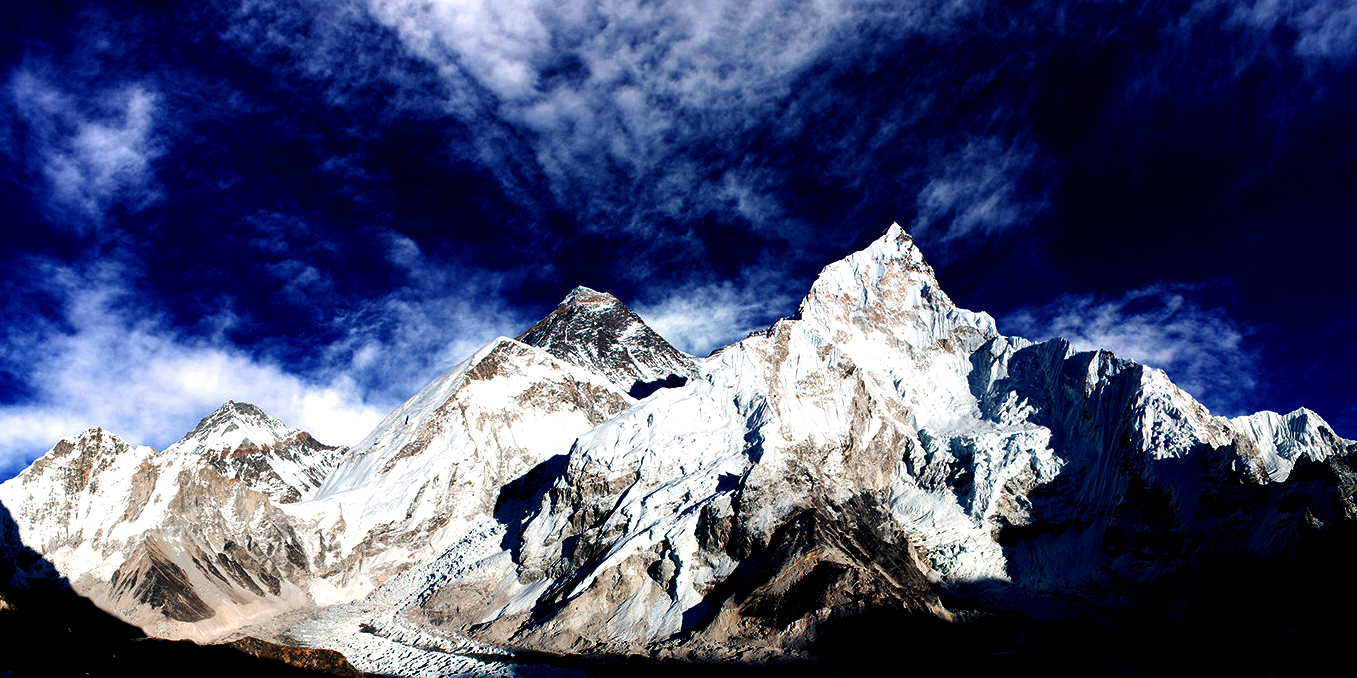
 Group Size: 1- 15 PAX
Group Size: 1- 15 PAX  Duration: 26 Days
Duration: 26 Days  Trip Start: Kathmandu
Trip Start: Kathmandu  Trip End: Kathmandu
Trip End: Kathmandu  Average Dist. per Day: 12 KM
Average Dist. per Day: 12 KM  Average Time per Day: 5 Hrs
Average Time per Day: 5 Hrs  Trip Grading: Challenging
Trip Grading: Challenging 


